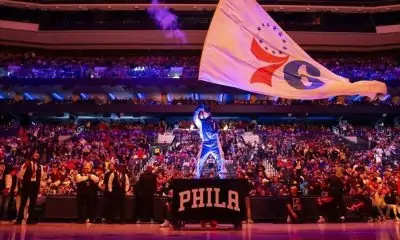VANCOUVER – Vanni Sartini has only seen a handful of episodes of “Welcome to Wrexham.”
But the head coach of Vancouver Whitecaps FC said that was enough for him to understand the value of the platform that is being offered when his squad squares off against the Welsh side from the FX docu-series in an international friendly on Saturday at BC Place.
“A lot of the fans that (will be) here are Whitecaps fans that come regularly,” Sartini said Friday. “But maybe some of them are coming because they’re fans of the documentary, or they hope to see if Ryan Reynolds is coming.
“We have a big chance to appeal to a group of people that maybe aren’t following the Whitecaps closely every week. I think we have a responsibility to put on the best show possible.”
Saturday’s match will be the first-ever in Canada for the Red Dragons, who are closing out their “2024 Wrex Coast Tour” after a pair of draws against English Premier League sides in California.
It’s all part of the plan to nurture a global fanbase for the historic club, which was founded in 1864 and is the third-oldest pro soccer team in the world.
Wrexham AFC has risen to prominence since being acquired in 2020 by Reynolds — a Vancouver native — and fellow actor Rob McElhenney.
“Welcome to Wrexham” has become a smash hit and captured the club’s meteoric improvement under its new ownership group. The docu-series won five primetime Emmy awards in 2023, is nominated in six categories in 2024 and has now been renewed for a fourth season.
After earning promotion in back-to-back years, Wrexham is about to kick off its new season in League One, the third tier of English football.
Reynolds’ promotional duties for his new blockbuster film “Deadpool & Wolverine” kept him away as his squad delivered a pair of good results in California — a 1-1 draw against AFC Bournemouth in Santa Barbara on July 20 and a 2-2 draw against Chelsea in Santa Clara on Wednesday.
He will be on hand Saturday for the match at BC Place, Wrexham manager Phil Parkinson confirmed on Friday.
“I think him and Rob have been incredible for, not just the club and the town, but for the whole league, really,” said Wrexham defender Eoghan O’Connell. “Kind of opening people’s eyes to what can be done when you have owners that really care and really want to work and put into the club.
“And, yeah, they’re the same behind the scenes.”
Striker Paul Mullin, Wrexham’s top scorer from each of the last three seasons, did not make this year’s trip to North America. He underwent minor spinal surgery in June to correct a lower back and hamstring issue and will miss the beginning of the League One season.
The Whitecaps will be without their captain, Ryan Gauld, who suffered a Grade 1 MCL sprain in his left knee in the first half of the Whitecaps’ 4-3 loss to the Houston Dynamo last Saturday. Fafa Picault, who has four goals in his last three matches, will also be unavailable due to league-mandated time off.
WREXHAM AFC AT VANCOUVER WHITECAPS
Big turnout: Over 30,000 fans are expected at BC Place on Saturday. Pre-match festivities include a street party starting at 1:30 p.m. and an opportunity for fans to meet players from both the Whitecaps and Wrexham, starting at 2 p.m.
Real grass: By Wrexham’s request, the artificial turf at BC Place has been replaced with real grass for the match. Though temporary, the process is helping the stadium’s technical team gather information ahead of the 2026 FIFA World Cup. BC Place will host seven matches for that tournament, all on grass.
Leagues Cup: With MLS regular-season action paused until Aug. 24 due to the Paris Olympics, the 11-8-5 Whitecaps sit fifth in the league’s Western Conference with 38 points. Vancouver’s next action will be in the group stage of Leagues Cup play, visiting LAFC on July 30 before hosting Club Tijuana on Aug. 3. The Round of 32 will begin on Aug. 9.
This report by The Canadian Press was first published July 26, 2024.





















